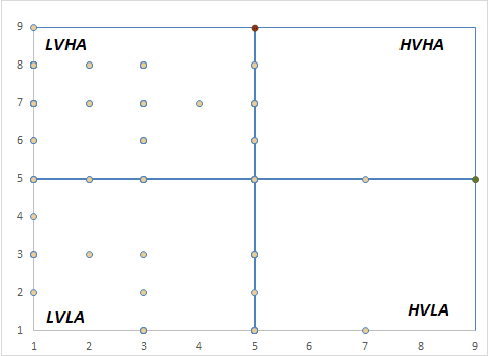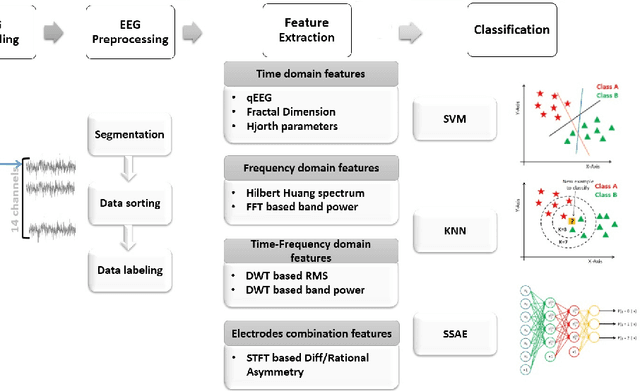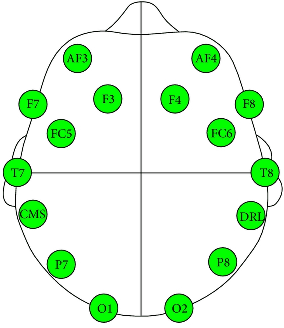Rahma Fourati
DASPS: A Database for Anxious States based on a Psychological Stimulation
Jan 09, 2019



Abstract:Anxiety affects human capabilities and behavior as much as it affects productivity and quality of life. It can be considered as the main cause of depression and suicide. Anxious states are easily detectable by humans due to their acquired cognition, humans interpret the interlocutor's tone of speech, gesture, facial expressions and recognize their mental state. There is a need for non-invasive reliable techniques that performs the complex task of anxiety detection. In this paper, we present DASPS database containing recorded Electroencephalogram (EEG) signals of 23 participants during anxiety elicitation by means of face-to-face psychological stimuli. EEG signals were captured with Emotiv Epoc headset as it's a wireless wearable low-cost equipment. In our study, we investigate the impact of different parameters, notably: trial duration, feature type, feature combination and anxiety levels number. Our findings showed that anxiety is well elicited in 1 second. For instance, stacked sparse autoencoder with different type of features achieves 83.50% and 74.60% for 2 and 4 anxiety levels detection, respectively. The presented results prove the benefits of the use of a low-cost EEG headset instead of medical non-wireless devices and create a starting point for new researches in the field of anxiety detection.
Unsupervised Learning in Reservoir Computing for EEG-based Emotion Recognition
Nov 23, 2018



Abstract:In real-world applications such as emotion recognition from recorded brain activity, data are captured from electrodes over time. These signals constitute a multidimensional time series. In this paper, Echo State Network (ESN), a recurrent neural network with a great success in time series prediction and classification, is optimized with different neural plasticity rules for classification of emotions based on electroencephalogram (EEG) time series. Actually, the neural plasticity rules are a kind of unsupervised learning adapted for the reservoir, i.e. the hidden layer of ESN. More specifically, an investigation of Oja's rule, BCM rule and gaussian intrinsic plasticity rule was carried out in the context of EEG-based emotion recognition. The study, also, includes a comparison of the offline and online training of the ESN. When testing on the well-known affective benchmark "DEAP dataset" which contains EEG signals from 32 subjects, we find that pretraining ESN with gaussian intrinsic plasticity enhanced the classification accuracy and outperformed the results achieved with an ESN pretrained with synaptic plasticity. Four classification problems were conducted in which the system complexity is increased and the discrimination is more challenging, i.e. inter-subject emotion discrimination. Our proposed method achieves higher performance over the state of the art methods.
 Add to Chrome
Add to Chrome Add to Firefox
Add to Firefox Add to Edge
Add to Edge